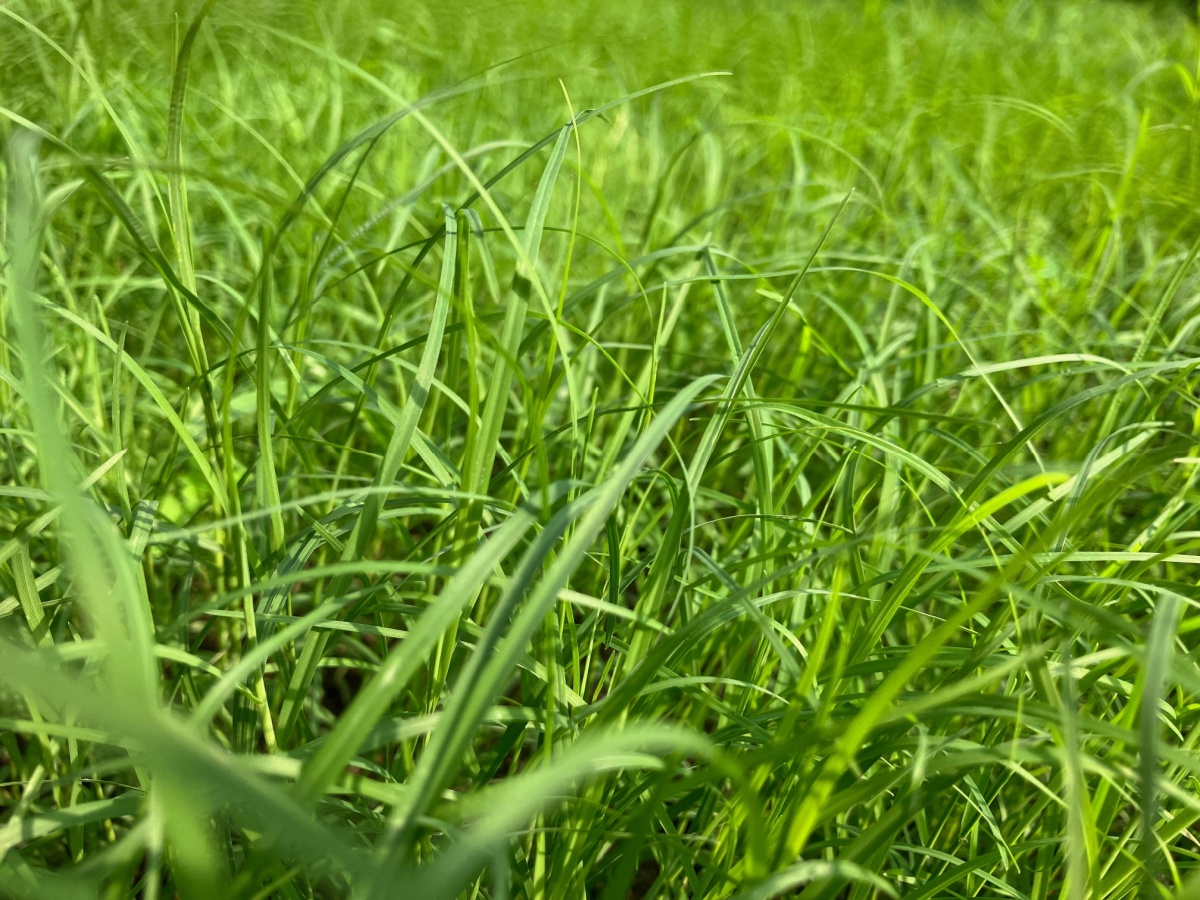
When it’s time to lay new grass seed, one of the first decisions you’ll need to make is whether to choose warm-season or cool-season grass. This decision is more important than you might think, as the right grass type can significantly impact the appearance, maintenance, and longevity of your lawn. Warm-season and cool-season grasses thrive in different climates and conditions, so selecting the best one for your property ensures your lawn remains lush and green year-round.
What Exactly Are the Differences Between Warm-Season vs. Cool-Season Grasses?
First, it’s helpful to note that “warm-season grass” and “cool-season grass” are two broad terms that encompass a variety of grass species. Warm-season grasses, such as zoysia grass and Bermuda grass, thrive in warmer climates, while cool-season grasses, such as bluegrass and fescue grass, grow well in colder climates. That’s the main difference between warm-season vs. cool-season grass, but you must recognize that each species also varies in growth habits, maintenance requirements, and environmental tolerances. Let’s take a closer look at each category of grass to explore these differences.
Warm-Season Grasses
Popular warm-season grasses include Bermuda, zoysia, and centipede grass. These grasses are well-suited for regions with hot summers and mild winters, such as the southern United States, due to their heat tolerance. They can handle high temperatures without wilting or dying off. In the cooler months, warm-season grasses will often go dormant, turning brown as they conserve energy. However, they bounce back quickly when temperatures rise again.
Warm-season grasses grow best during the mid- to late spring, summer, and early fall when temperatures are consistently warm. They typically begin to green up in early spring, hitting their peak during the hottest months.
Common Types of Warm-Season Grass
- Bermuda Grass: Known for its durability and ability to withstand heavy foot traffic, Bermuda grass is a popular choice for lawns that will be enjoyed by kids and pets.
- Zoysia Grass: This grass is dense and slow-growing, making it more resistant to weeds and requiring less frequent mowing.
- St. Augustine Grass: Ideal for coastal regions, St. Augustine grass is known for its broad blades and tolerance to salt and shade.
- Centipede Grass: Often referred to as “lazy man’s grass,” centipede grass is low-maintenance and performs well in acidic soils.
Cool-Season Grasses
In contrast, cool-season grasses thrive in areas with cold winters and mild summers, such as the northern United States. They begin growing as soon as the soil warms up in early spring and continue to flourish until the heat of early summer sets in. When summer temperatures rise, cool-season grasses may enter a state of dormancy to protect themselves, only to revive again as temperatures cool.
Common Types of Cool-Season Grass
- Kentucky Bluegrass: Renowned for its fine texture and rich color, Kentucky bluegrass is a favorite for high-quality lawns.
- Fescue Grass: Tall fescue is known for its shade tolerance and adaptability to a range of soils.
- Perennial Ryegrass: Quick to germinate, ryegrass is often used in mixes to provide a green cover while slower-growing grasses establish.
The Transition Zone: A Blend of Warm and Cool-Season Grasses
For those living in the transition zone, an area that stretches across the central United States, the choice between warm-season vs. cool-season grass becomes more nuanced. In this zone, summers can be hot enough to support warm-season grasses, while winters can be cold enough for cool-season grasses to thrive.
Homeowners in the transition zone often plant warm-season grasses in the summer and overseed with cool-season grasses in the fall to achieve a lawn that stays green and healthy throughout the year. However, managing a mixed lawn can be challenging, as different grass types may require different care techniques. Consulting a lawn care specialist can help you determine the best strategy for your specific location.
Choosing the Right Grass for Your Lawn
Deciding between warm-season and cool-season grass for your lawn involves more than just picking a type that is known for being a deep shade of green or easy to maintain. A variety of factors influence how well a specific species will grow in your area. So, when you’re selecting a type of grass for your lawn, keep these key factors in mind:
1. Climate and Weather Patterns
Consider the average temperatures in your area during the growing season. If your summers are consistently hot and dry, warm-season grasses might be your best bet. However, if your region experiences harsh winters and mild, short summers, cool-season grasses will likely perform better.
2. Sunlight Exposure
Warm-season grasses generally require more sunlight to thrive, so if your lawn gets full sun for most of the day, these grasses will do well. On the other hand, cool-season grasses can tolerate partial shade, making them a good choice if your lawn has shaded areas or receives less direct sunlight.
3. Soil Type and Quality
Your soil’s composition and quality can significantly impact how well certain grass types grow. Warm-season grasses tend to prefer well-drained soils, whereas cool-season grasses are more adaptable to a variety of soil types, including those with higher clay content. Testing your soil’s pH and texture can help you determine which grass type will establish and spread more effectively on your property.
4. Water Availability
Warm-season grasses are generally more drought-tolerant and can withstand periods of low rainfall, making them ideal for areas with water restrictions or dry climates. Cool-season grasses often require more water during the warmer months to stay green and prevent dormancy. Consider how much water you can consistently provide to your lawn before making a decision.
5. Maintenance Preferences
Warm-season grasses typically require less frequent mowing and fertilization, but they may need more intensive care to bring them out of dormancy in early spring. Cool-season grasses, on the other hand, often demand more regular mowing and fertilization throughout their growing seasons, but they stay green longer into the year. Reflect on how much time and effort you’re willing to dedicate to lawn care when choosing between these grass types.
Let Our Experts Help You Decide
Choosing the right grass type for your lawn can be overwhelming, especially when considering the nuances between warm-season vs. cool-season grasses. If you’re unsure which grass will best suit your needs, the experts at Lawn Specialties are here to help. With years of experience in lawn care and a deep understanding of local climates, we can guide you in selecting the perfect grass type for your property in Pennsylvania or New Jersey. Contact our experts today to learn more about our lawn care, overseeding, and hydroseeding services and how we can help you achieve the lush, green lawn you’ve always wanted.

